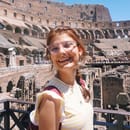Ai Weiwei first made headlines in the early 2000s. He had started a blog which criticized the Chinese government as well as social norms with the use of various media including writing and the arts. In 2009, an earthquake rocked the Sichuan province, killing many students. The Chinese government’s refusal to be transparent about the amount that was killed inspired Ai Weiwei to create a blog called, “Citizen’s Investigation” which worked to post the names of every victim of the earthquake. That blog was shut down later in 2009 when the Citizen’s investigation list had reached 5,385 names. The Chinese government continued to harass him, even beating him to the point where he had to go to the hospital for emergency brain surgery. In 2011 he was arrested for what appeared to be (and continues to appear today) bogus charges for three months, raising outrage from the global community. After he was finally released, Ai Weiwei continued to be monitored heavily by the Chinese government to which he responded by putting flowers on their bikes or filming himself inside his house 24/7. His perseverance and protest has inspired many around the world.
Ai Weiwei himself was always an outsider of China, being the son of a poet at a time when the government rejected the arts. So it should come as no surprise that he takes a particular interest in the refugee crisis. Just last February he loitered the columns of a concert hall in Berlin with the life vests refugees wore while crossing the Mediterranean. He was visiting the island of Lesbo and documented the refugees there which eventually led him to a year-long travel to 23 different countries and 40 different refugee camps. There arose the documentary called Human Flow, which tracks the lives of refugees.
Courtesy: VSCO (@savannahtindall)
According to the Los Angeles Times, the documentary scarcely shows Ai Weiwei as a filmmaker. Instead, it shows little interactions with him and different refugees, such as providing aid or allowing a refugee to cut his hair. In including these clips, he hopes to humanize them. The shots in this film are also incredibly scenic, the New York Times calls them, “meditative.” But just as fast as it appears, the soothing image is taken away from the audience and is replaced with scenes of refugees in chaos. The contradictions are constant throughout the film, demonstrating the peace these refugees seek but what they end up with instead. Ai Weiwei also uses drones to capture images of the area, showing the immense size of the camps.
Human Flow is timely not only with the recent with the refugee crisis but with the recent xenophobia in America, which can be seen as the documentary ends at the U.S./Mexico border. By a well-respected art activist like Ai Weiwei bringing attention to issues with immigration and demonstrating the struggles that these people go through and their yearning for a better life for them and their family, a difference can be made. As far as a solution goes, Ai Weiwei says, “All these tragedies are man-made. If we can cause the tragedy, we can solve the tragedy if we are willing to. To find the humanity. This is the only thing we can hope.”
Courtesy: Phaidon
Human Flow opens Oct. 13 in select theaters. The trailer can be viewed here.


